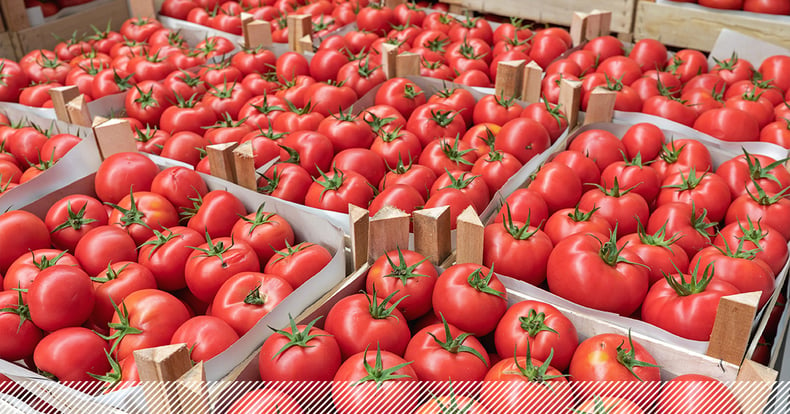COVID-19 is impacting the quality of produce deliveries. Here’s how to keep it from leading to food waste.

All facets of the foodservice industry have been affected by COVID-19, including food suppliers. The vendor partners we get our meats, seafood, and produce from are also seeing significant challenges as demand for products has reduced and supply in some areas is excessively high. The problem is, because demand is reduced, suppliers have more product on hand. This can sometimes lead to deliveries coming later in the window of freshness, which increases the risk of food waste. This is creating two issues: one, kitchens have to retrain their staff on inspecting produce; and two, operators need to figure out ways to use produce faster when they do get poor quality.
So how can chefs and culinary teams address these issues that may be new to them? Below are some ways that a culinary team can get back on track to control food waste through proper procurement and receiving practices.
- Work with your current supplier to set up your quality specs for the items you are ordering. Most vendors will adhere to the specs you set for your produce, but you have to make sure they are spelled out.
- Consistently inspect each and every produce item that is delivered to your operation to ensure they meet those specs.
- Insist your supplier deliver during a window when your team actually has time to do a thorough inspection. Your staff can know exactly how to inspect a delivery, but if it comes during lunch rush, it doesn’t matter.
- It is always best to assign one or two culinary team members to receive and inspect the deliveries prior to signing for it. If that is not possible, then train the entire culinary team to know what to look for and refuse any items that do not meet your quality standards.
If your operation is in the habit of accepting all food deliveries without inspection, chances are your vendor knows that and will often try to push inferior quality items to those accounts that never check. If they know your operation consistently checks for quality, chances are much better that they will not try to slide in poor quality products. Once the delivery is made and the invoice is signed, it is much harder to call out a vendor for quality issues. The best practice is to deal with quality issues at the time the delivery is being made and refuse to accept substandard quality.
Dealing with poor quality produce
So what happens when produce does get delivered and you are stuck with trying to get the most out of a product that only has a few days left on it? Here are a few ways to deal with this issue:
- If you notice any part of a case that is moldy, slimy, wilted, or right on the edge of going bad, remove it from the rest of the case and track it on your Leanpath Tracker. If you leave it in the case, it will cause the rest of the product to turn bad faster.
- Be sure to store it all immediately and properly. Get the produce in the walk in and back under refrigeration quickly. Produce left out will only go bad faster, so receive your order, and store it immediately.
- Have the right storage containers for your items. Clear bins help you keep an eye on any items that need to be used immediately.
- If you have the flexibility to add menu items or run features, target produce items that need to be utilized in those new menu items first. You paid for them, so try and get the money out of them.
- Have a different plan to use the item. For example, if you purchased fresh spinach for a salad on your menu and the spinach is starting to wilt, it may not be good for that salad but it may be just fine for a wilted spinach side dish or a component of a cooked dish. Include your team members in brainstorming solutions.
Remember, once you sign for any order, it’s your responsibility. It is always in your best interest to inspect all food items during the delivery and receiving process. Reject any items that are not up to quality standards and train the culinary team to know proper standards for your operation.
Sign up for our monthly newsletter in the footer below for the latest in
food waste prevention initiatives, best practices, webinars and more.